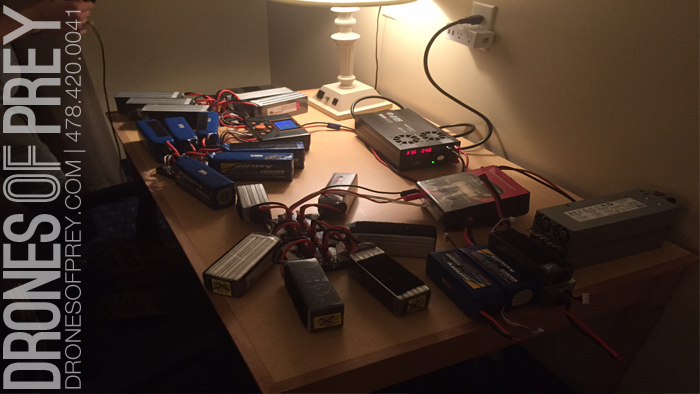A Risk of Drone Aerial Photography
Whether you are running a business or flying for hobby, drone aerial video and photography comes with inherent risks and rewards. While the rewards are plenty, the risks can often be overlooked. If you fly drones you must be readily aware of the risks associated with Lithium Polymer batteries. There have been many victims deciding to enter the world of drones who had no understanding of liPo batteries and the dynamics of charging them. That’s why we scratch the surface with The Small Book on Lithium Batteries.
Your Drone Battery & Charger
This only touches on a few things to keep in mind but please read the manual for your charger as well as the instructions that come with your battery.
In the beginning
I must admit that my evolution from RC trucks to RC helicopters was a wild and crazy ride. The first problem I faced was not the control aspect of the aircraft; instead, it was the transition from Nicad to liPo. I bought a helicopter from a local hobby shop that came with this really small battery. I plugged the battery into the provided charger (that sucked) and after about 3 hours I could fly this machine for about 3 minutes. The natural progression of RC has given us batteries that hold HUGE power with short charge times. With those benefits come risks.
Balanced charge
When charging a liPo battery make sure you have a charger that can “balance charge”. A liPo battery typically involves a pack made up of multiple cells wired in parallel to create a battery that has voltage needed to provide the duty required for the task. A liPo battery at maximum charge will equal 4.2 Volts per cell. Never charge a liPo battery on a charger designed for Nicad or Nimh.
Charging your battery
While some battery companies claim that you can charge their batteries over 1c, I don’t recommend it nor practice that. When you charge a battery at 1c it means charging at the same rate as the battery capacity. For example, a 3 cell 2200 milliamp battery would be charged at 2.2 amp hours. There are companies that claim you can charge their batteries at 2c but I just do not feel comfortable doing this for the health of the batteries if nothing else.
Hot batteries
If you are sorting through your batteries after a long day of shooting and you come across a warm pack, check it! If it’s not the last pack of the day and the hotel is close then check it with a meter that tells you what each individual cell is doing. We had this happen to us. Pulled our batteries out at the hotel and just happened to notice one 6 cell 8000 mah pack was hot. Just one cell was hot and it was uncomfortable to touch. We investigated it further to find that cell for whatever reason was extremely out of balance and the internal resistance was off the charts. We disposed of it immediately.
Battery disposal
Proper disposal of a liPo is another important subject to touch on. There have been some trash disposal and landfill fires and issues related to liPos due to improper disposal. To properly dispose of a liPo you should immerse it in a very brine salt water bath outside for a minimum of 12 hours. The battery should be completely immersed for this period. You should keep it away from any pets or wildlife as well. After this, the battery will be deemed dead and safe for throwing in your typical household trash.
Charger on the fly
It’s easy to show up at a one or two flight jobs with all of your batteries charged. The challenge presents itself when you are in Costa Rica and your bag of liPos runs out and you have to charge on set or on the fly. Make sure you have an adequate charger. Make sure you have a way to charge 8, 10, 12, or even 20 batteries at a time and that you can charge them safely.
Bottom line
Aerial photography and video require planning and forethought and if you aren’t charged, you aren’t flying. There is nothing worse than the director planning a huge and fantastic shot and when he says go, you have to tell him your batteries are charging.
The ABC’s of liPos: Always Balance Charge, Be there while they are charging, Check all connections.

